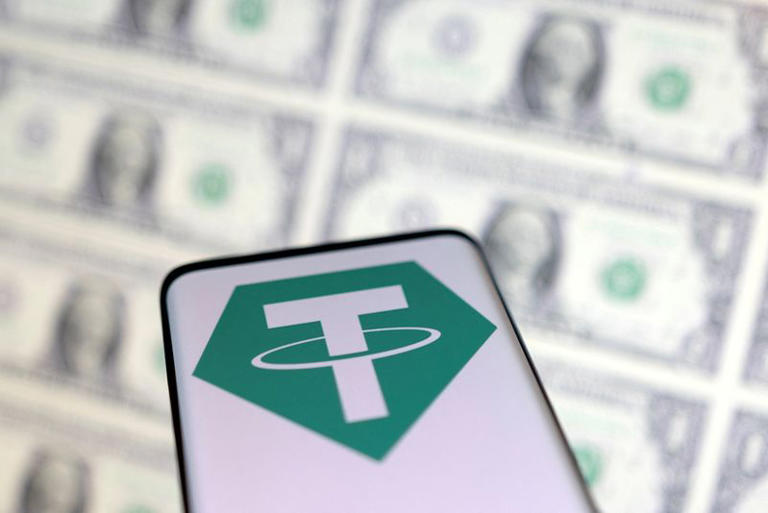As Tether celebrates reaching $100 billion in circulation, concerns about potential risks to broader financial markets have been heightened.
The stablecoin, pegged to the US dollar, maintains a constant value by purportedly holding dollar-denominated reserves for every token it issues. Advocates argue that Tether facilitates swift fund transfers within the crypto ecosystem, bypassing the traditional banking system.
Michael Hall, founding partner of London-based crypto asset manager Nickel Digital, emphasized Tether’s crucial role in daily operations, particularly in facilitating rapid fund transfers across trading platforms.
However, regulators have expressed apprehensions about the growing reserves of stablecoins, viewing them as a potential source of systemic risk. Tether’s dominant position in the stablecoin market, according to James Butterfill, head of research at asset manager CoinShares, heightens this risk within the crypto space.
The concern lies in the event of Tether’s failure, albeit unlikely, which could precipitate a significant drop in trading volumes. US regulators have cautioned banks about the susceptibility of stablecoin reserves to rapid outflows, especially if holders seek to convert these tokens into traditional currency en masse.
Tether’s spokesperson highlighted the real-world value of its products, emphasizing their role in providing access to the global financial system for billions of unbanked individuals worldwide.
Additionally, the spokesperson underscored Tether’s proactive engagement with law enforcement and regulatory agencies globally to combat the illicit use of stablecoin technology, citing instances where Tether has frozen hundreds of millions of USDT associated with illicit activities.
CEO Paolo Ardoino reiterated Tether’s commitment to transparency, stability, and responsible financial management, echoing the company’s stance on maintaining integrity within the crypto ecosystem.
Despite the challenges faced in 2022, crypto markets have largely recovered, with Bitcoin experiencing significant gains, driven in part by excitement surrounding inflows into US spot Bitcoin ETFs.
Tether’s growth has mirrored this resurgence, with approximately $29 billion worth of Tether created in the past year alone, as highlighted in the company’s recent statement.
The crypto lobby has historically downplayed the systemic risk posed by asset-backed stablecoins like Tether. However, with Tether’s significant reserves now approaching $100 billion held in traditional banking institutions, concerns have arisen regarding the potential impact on these banks in the event of Tether encountering issues.
Rajeev Bamra from Moody’s Investors Service highlighted the substantial concentration risk associated with Tether’s dominance in the crypto world, emphasizing that any disruptions to Tether could reverberate through the banking institutions holding its reserves.
S&P Global Ratings rated Tether poorly in a stablecoin stability assessment, citing a lack of transparency regarding custodians, counterparties, or bank account providers of its reserves. While Tether agreed to quarterly reserve reports as part of a settlement with the New York Attorney General’s office in 2021, questions remain about the adequacy of these reports.
Tether’s latest reserve report at the end of 2023 revealed holdings of various assets, including U.S. Treasuries, precious metals, Bitcoin, and secured loans. However, Paul Brody from Ernst & Young cautioned that reserve reports do not constitute a comprehensive financial statement audit.
Despite ongoing regulatory developments surrounding stablecoins, Tether currently operates without specific supervision or rules governing its reserve investments. This lack of oversight raises concerns among analysts about the transparency and accountability of Tether’s operations.
While Tether claims to be “fully transparent,” it does not provide detailed information about the location of its reserves. As a result, entities like Nickel Digital approach Tether usage cautiously, considering both its convenience and the potential downside risks, such as losing its dollar peg.
Nevertheless, crypto traders who rely on Tether point to its track record of maintaining its peg and processing large redemptions during market turbulence as a source of confidence. Michael Hall from Nickel Digital emphasized that while no asset is without risk, Tether’s history positions it as a relatively lower-risk option within the digital asset spectrum.
